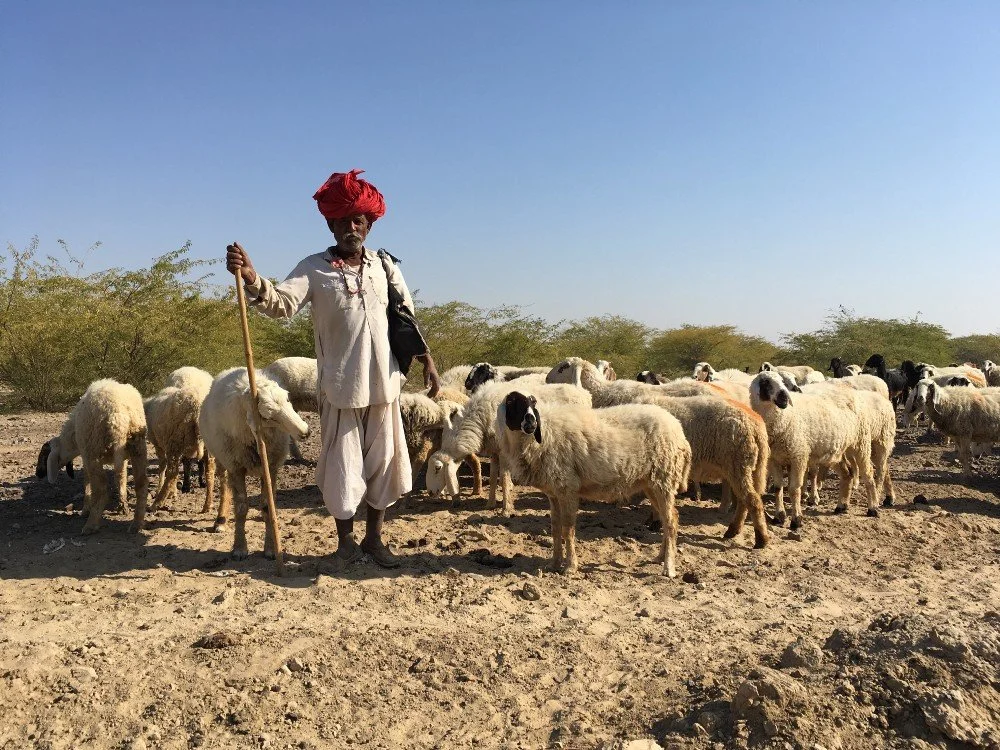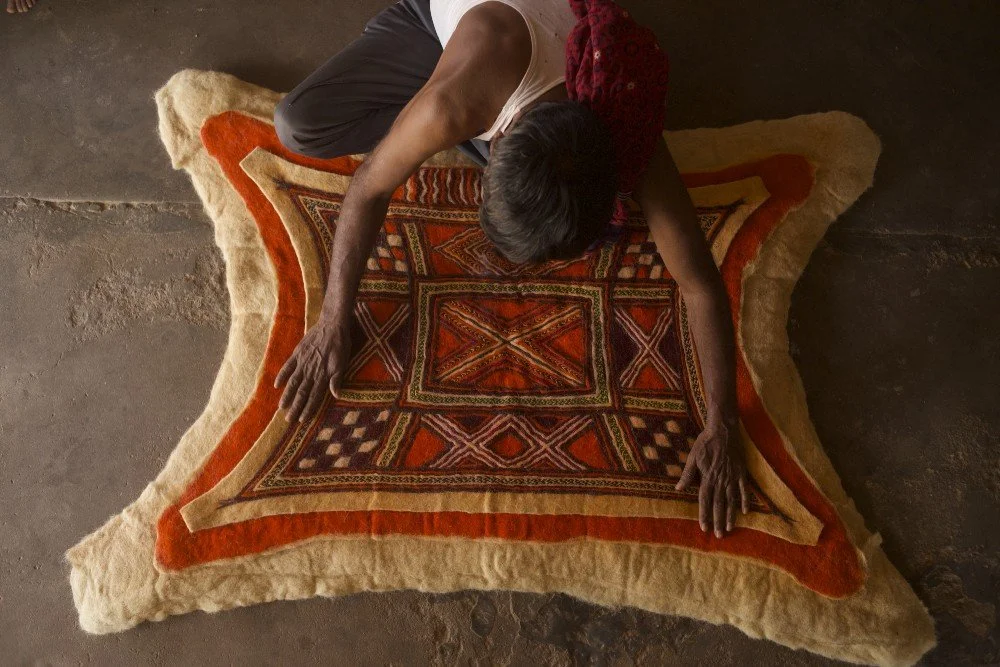Sheep and wool of the arid west of India
“We wrap our relationship with the weavers closely around us”
A herd of sheep and goats in Kutch. Image by Ishaan Raghunandan for Living Lightly
Weather can be extremely harsh on the bare, barren expanses of west India. And so, wool, the most versatile of textile fibres, has been a constant companion in the lives of herders of the arid ,semi-arid, and savannah landscapes of the region. These lands continue to be home to impressive herds of foraging goats, sheep, camels and cattle. The famed shepherds of Rajasthan and Kachchh ~ Rabaris, Raikas, Bharwads, Gujjars, Sindhi, and Rajputs ~ have all crafted a life in tune with the rhythms of this capricious climate.
Image: A Raika Herder with his herd. Image courtesy Centre for Pastoralism
The sheep of these regions are known for their ability to graze all day on little water or food, under the harshest of suns. And their keepers too are amongst the most mobile of pastoralists, traversing vast terrains, always on the move, in search of graze and water. No wonder, the states of Rajasthan and Gujarat harbour some of the most precious animal genetic resources of the country. Rajasthan alone is the native tract for eight indigenous sheep breeds of India, while Gujarat accounts for another three.
Naturally then, the arid west is also home to a wide variety of wool craft practises. The elegant craft products never fail to grab attention in the backdrop of monochrome landscapes that stretch into hazy horizons.
Extremely versatile, the wool on the sheep’s back serves many purposes. It protects the sheep in its initial days; gets shorn at the onset of summer and the onset of monsoon; and then rediscovers itself as pieces of textiles. Textiles that protect the herders from the heat, cold, and the rain!
“Our ties with the Bharwad herders have stood for eternity. Even to this day, Bharwad brides wear the tangaliya skirt that we weave.”
A tangaliya skirt being woven on a pit-loom. Image by Ishaan Raghunandan
Image: Raniben spinning on a charkha. Image by Ishaan Raghunandan
The wool crafting chain starts with the herder communities themselves ~ the older men, especially, are obsessive spinners, spinning continuously on a takli as they move with their animals. The women of the herding families, however, are the real experts in spinning fine, strong yarn.
“It was not uncommon for a Rabari to come to the loom and count the warp threads to ensure the quality of the product.”
A Rabari woman with her woollen Ludi. Image by Aishwarya Maheshwari
The herders were known to be sticklers for quality, often challenging the Marwada weavers to reach higher levels of finesse. The Dhabdas and the Pattus of these regions remain some of the most fascinating pieces of living textile heritage, known for their versatility. They are often used as shawls, blankets, lightweight mattresses, as well as improvised sacks to carry stuff.
These lands are also home to nomadic looms. These basic looms have often been carried on the herders’ trails, and used to weave tough Kharads, each built to last a hundred years.
Image: Gul Mamad bhai, a felter at work. Image by Ishaan Raghunandan
2019 was an especially difficult year for us. There had been little rain for four years and we had no work. So we turned back to our craft of felting after 12 long years.
– Gul Mamad bhai, a felt artisan based in Todiya village, Kutch.
A feltmaker making a saddle. Image by Ishaan Raghunandan
Development in the form of tar roads was late in finding its feet on these lands which made Horses and Camels vital for transport. And a large community of felters took it upon themselves to make felted saddles for the riders. There remain a few makers of these textiles whose saddles continue to be sought and bought.
Rajasthan and Gujarat are also known for producing most of the carpet wools of India. Wools from the famed Chokla and Magra sheep stand out for their texture, shine, and spring; they are considered one of the best wools for carpets. Bikaner, the land of these sheep, also hosts the largest wool mandi in Asia, as well as over 100 spinning mills which process 4 lakh kilos of wool in a day!







